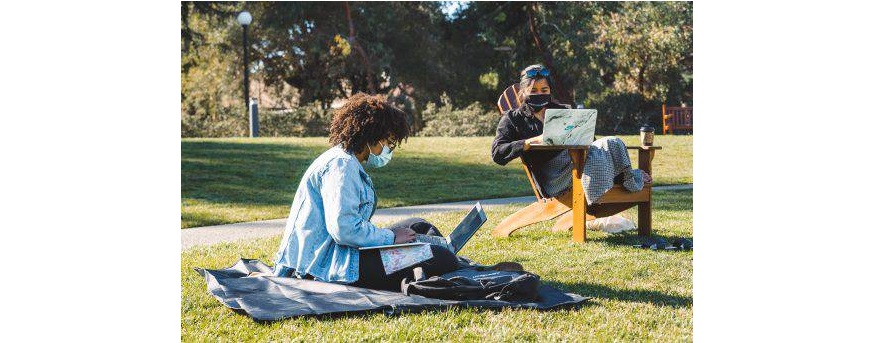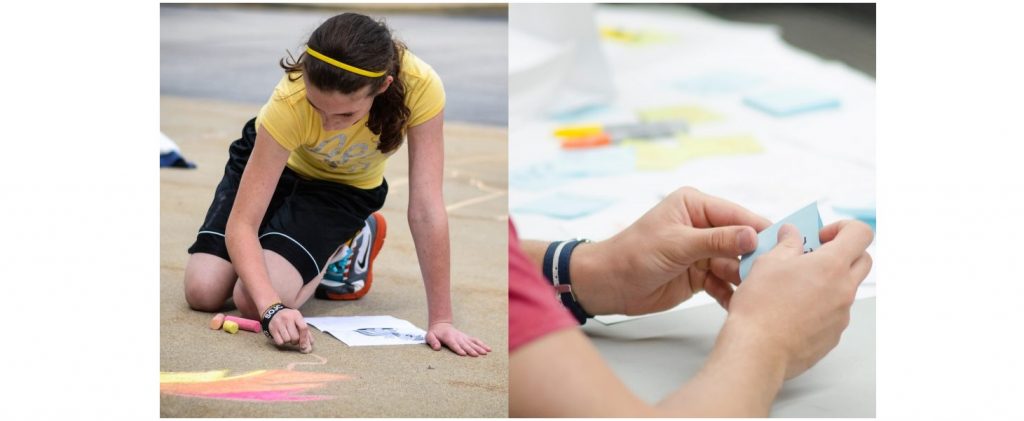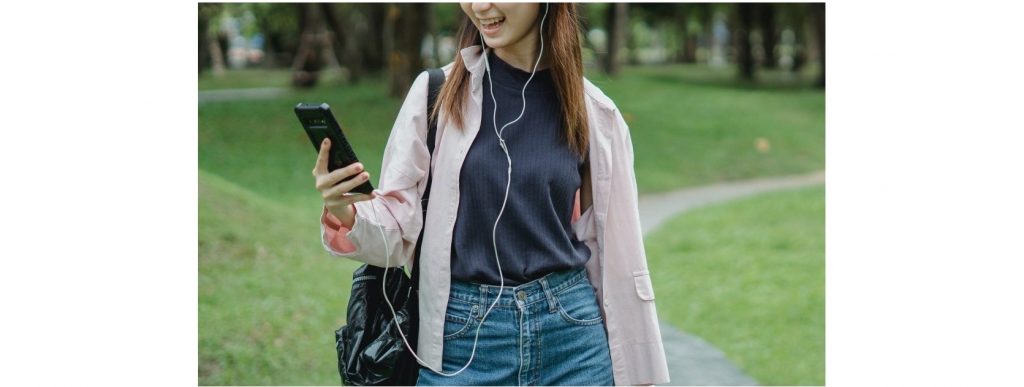Implementing varied learning activities, when backed by sound pedagogical rationale, is an important practice for learning experience design. Varying the delivery modality (defined here as the medium in which a student interacts with the material), however, is arguably as important as varying the nature of the activities themselves, particularly when most teaching and learning is remote.
Simply because classes are offered online does not imply that all work and learning must be completed online. Rather, skilled online course design often includes strategic decisions about learning that must occur via digital screen and learning that could be done via other modalities.
This article presents options for “Classes on Your Feet” — both synchronous and asynchronous learning activities that students can engage in while moving, reaping the benefits of simultaneous walking and thinking. These activities offer the flexibility for students to complete them either individually or with others, but away from a digital screen – walking, doing, thinking, learning – on their feet.
Topics covered in this article include:
- Creating an audio reflection
- Pair debriefs via phone
- Field notes from a distance
- Creating an artifact or model
- Phone interviews
- Utilizing podcasts
Creating an audio reflection
Reflection provides students a time to solidify and make meaning of the content with which they have recently engaged. These reflections can often take the form of a written response, which many students choose to do at their computer, if instructors require assignment submission. However, these reflections can be taken offline, allowing students the flexibility to move or walk while thinking about their learning. Consider allowing students the opportunity to submit their reflection(s) via audio recording, as opposed to using text.

Tools needed:
- Student access to a smartphone
- A voice recording smartphone app
- iPhone users have a native Voice Memo Application
- Android users have various possibilities based on the phone model or can download Voice Recorder (free) from the Google Play store.
Suggested tips:
- Audio quality may be affected by movement or environmental factors. Students may wish to use headphones/earphones with an integrated mic to help with this issue.
- Instructors who wish to review audio reflections may find the process more time-consuming than written reflections; however, instructors may find that reviewing audio reflections offers them the same flexibility as students, to list while on-the-move and away from a digital screen.
Pair debriefs via phone
One common discussion activity is a “think-pair-share,” in which students take a few minutes to think about their repose to a discussion question, discuss their response with the person beside them, and then share their conversation with the class. However, this classic learning structure is challenging to replicate online. One strategy online instructors use for these kinds of pair debriefs is Zoom breakout rooms; however, this choice requires students to remain at their computers. Another option is simply to let students debrief in pairs via phone.

Tools needed:
- Student access to a smartphone
- Zoom application downloaded to a smartphone (if using Zoom option)
Suggested tips:
- Students without existing relationships may not be comfortable sharing their phone numbers. It may be best for instructors to allow students to choose their own partners for this debriefing activity.
- If the class is large and/or existing relationships are not evident, student pairs can join a Zoom meeting room on their smartphones. Cameras can be turned off, and Zoom will still function largely like a phone call. This also opens up the possibility of debriefing in triads rather than pairs.
- Sharing phone numbers via Zoom direct messages and connecting via phone or Zoom link takes a bit of setup time. It may be best to utilize phone debriefs for longer discussions or debriefing periods.
Field notes from a distance
Field notes are an important data source in qualitative research. While some researchers prefer to take field notes via computer, they can be and are still often effectively taken with pencil and paper.

Tools needed:
- Pencil and paper
Suggested tips:
- Students may be located in many different settings. Some may have access to other people or pets in their homes while others may be quarantining alone. Some are in cities, whereas some are in suburbs or rural areas. Instructors may wish to tailor the assignment so that the phenomena or focus of observation is flexible enough for all students to successfully complete it.
Create an offline artifact or model
Because students are so frequently online, it is very common to assign the creation of digital models or artifacts. However, these types of assignments can provide students a nice opportunity to unplug from their digital screens. Instructors may wish to think about asking students to create diagrams or thinking maps offline using analog materials.

Tools needed:
- Miscellaneous materials students have at hand (colored pens, sticky notes, chalk, markers, paper, etc.)
Suggested Tips:
- Students likely have different materials available in their homes. It may be helpful to structure assignments so as to not necessitate that particular materials must be used.
- Students may wish to share their analog or hands-on artifacts with peers during synchronous class. If time and class size allow, instructors may consider building this into their class agendas.
Phone interviews
Often researchers prefer to conduct interviews in person, when possible. However, there are many times when there is a great distance (or social distance) between interviewer and interviewee. On these occasions, it is typical for researchers to use technology to host the interview, usually via Zoom video-conference. However, Zoom can also be used to conduct audio-only interviews on one’s smartphone. Students can record the audio conversation on the Zoom smartphone app while the camera is turned off. If students are recording to the Cloud (as opposed to their phone’s storage), Zoom will provide both the transcript and audio file for download, both of which can be uploaded to Canvas.
Tools needed:
- Student access to a smartphone
- Zoom application downloaded to a smartphone (if using Zoom option)
- An interview protocol (optional)
Suggested tips:
- Audio quality may be affected by movement or environmental factors. Students may wish to use headphones/earphones with an integrated mic to help with this issue.
- Some interviewers may find it difficult to utilize an interview protocol while in motion. For more formal interviews, it may be best to find a spot outside in which to sit or stand somewhat stationary while facilitating the conversation.
- After the interview conclusion, both the audio file and the audio transcript will be available for download at stanford.zoom.us.

Utilizing podcasts
One component of a traditional lesson plan is the class lecture. Lectures often work best online when they are short and interactive. However, they can also take on other forms, such as utilizing podcasting technology. Instructors can either choose to assign a pre-made podcast or make their own podcast tailored to the specific content of the course.

Tools needed:
- Student access to a smartphone
- A smartphone application that can play audio files
- A link to an existing podcast or an instructor-created podcast file itself made available in Canvas
Suggested tips:
- Podcasts are audio-only learning experiences. Content that is best conveyed with photos, diagrams, or other visuals may not be a good fit for podcasting.
- If instructors wish to include photos, diagrams, or other visuals in a learning experience similar to podcasts, consider using Zoom to record a podcast-adjacent experience, vocally cuing students when to look at their phones to reference an important visual. This will allow students to move while learning about the content with only targeted glances at a device screen.